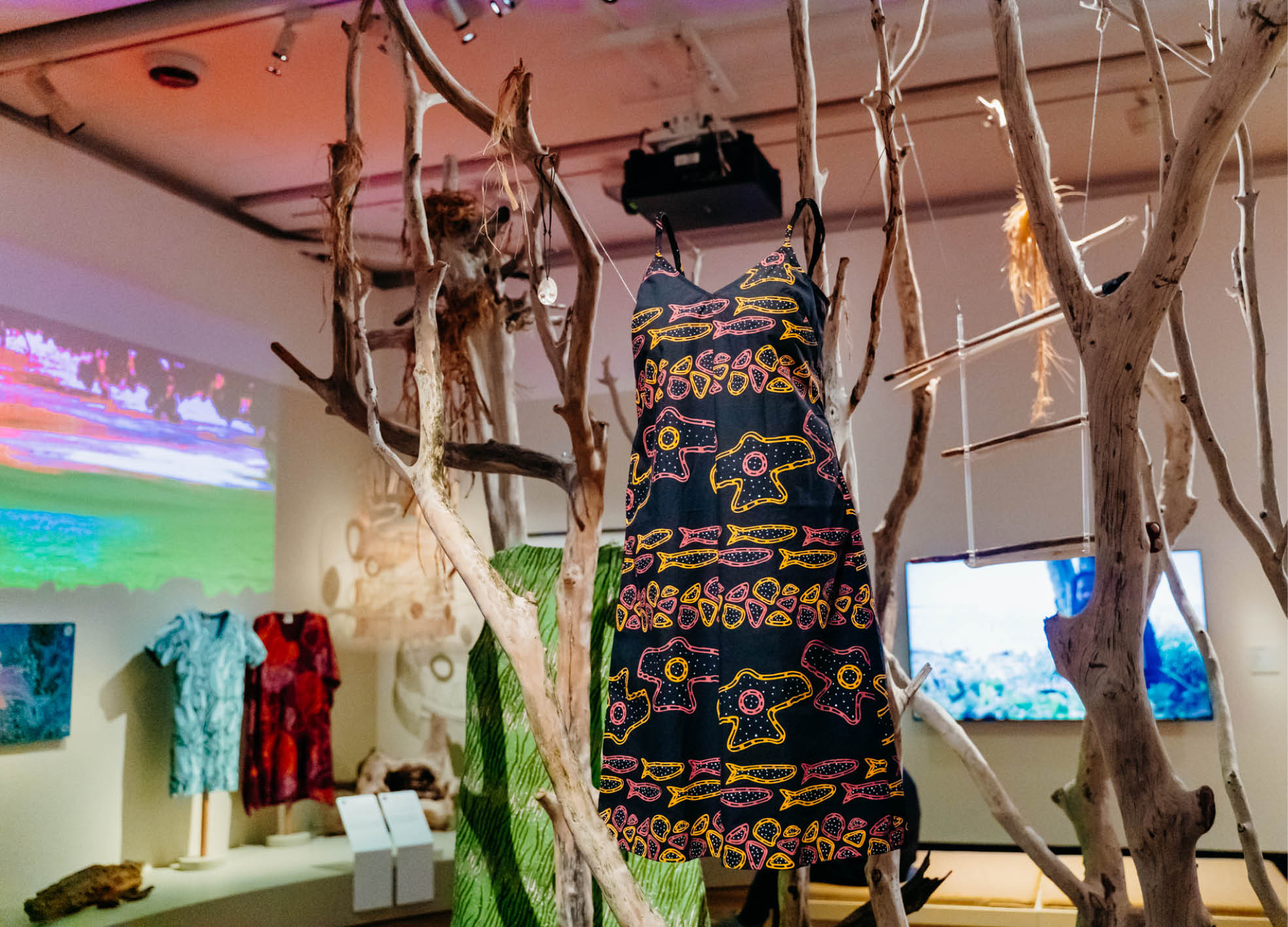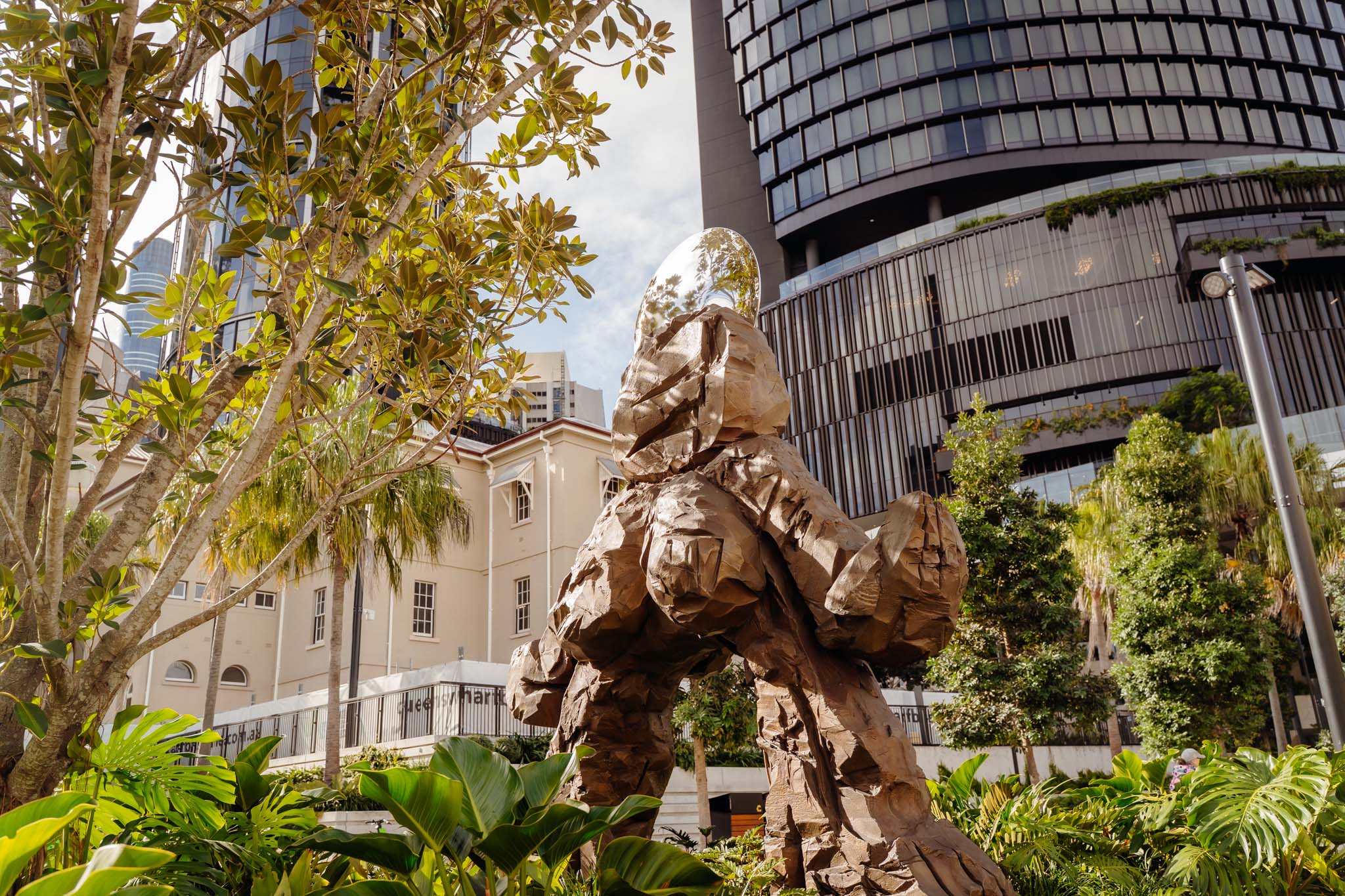Have an Old T-shirt? Upgrade Your Sleeve Game with This Fun Upcycle
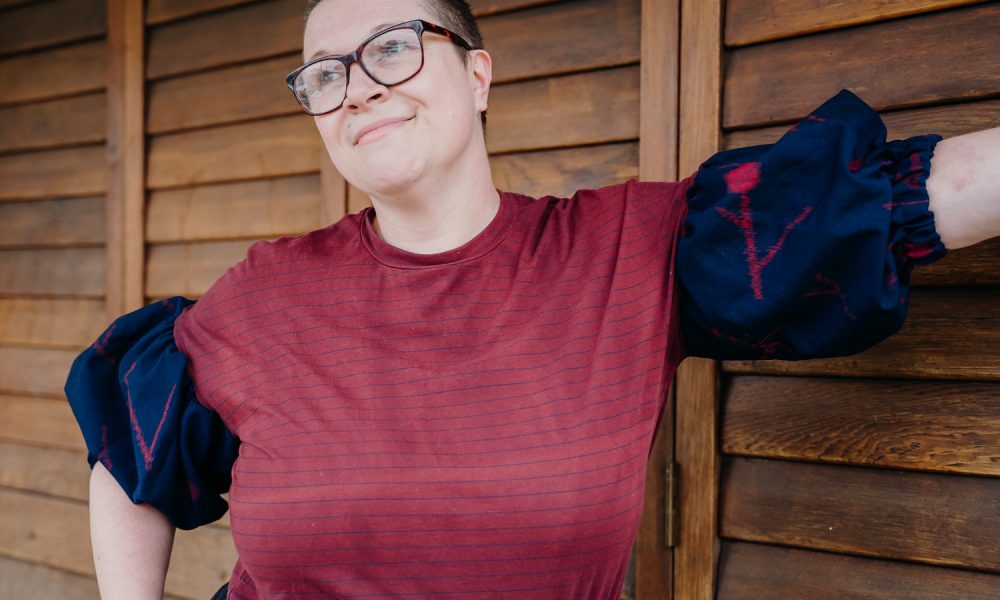
- Words by Peppermint
words and process shots LEEYONG SOO
T-shirts have defined casual dressing for decades, which perhaps explains why our wardrobes are so often overflowing with them. We have classic white t-shirts that “go with everything”; tees printed with logos, political slogans or embarrassing sight gags; tour merch from when our favourite bands played; and stripy types for that chic, vaguely French feel.
While the focal point of a t-shirt is usually the print or decoration across the chest, that’s no reason to ignore the arms. This project will show you how to amp up the interest and upcycle an old shirt by adding high-volume sleeves in your favourite fabric.
What you will need
A t-shirt!
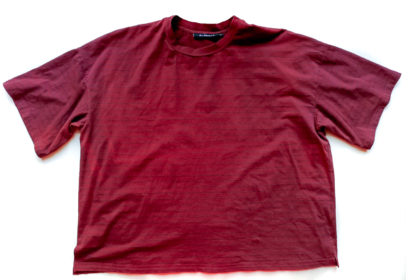
Fabric for the sleeves:
Type of fabric – You can use any kind of light to medium weight fabric. Weight-wise, chambray, cotton lawn, taffeta and broderie anglaise are just some of the fabrics suitable for this project, or you could try upcycling old sheets or even souvenir tea towels or headscarves (use one for each sleeve).
Length of fabric – This will depend on how long you want the sleeves to be. Put the t-shirt on and measure from the armhole seam at the shoulder down your arm until you reach the desired length. Remember you will also need an extra 2-3cm to form the casing for the elastic in the cuff.
Width of fabric – The width is also up to you, but keep in mind for a voluminous look, you’ll want at least two-and-a-half times your sleeve circumference.
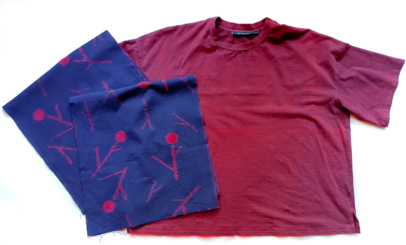
Sewing machine (or needle, if making by hand)
Thread (in a colour similar to the t-shirt and/or sleeve fabric, plus a completely different colour if possible, for making the gathering threads)
Scissors
Pins (and, ideally, someone to help you with pinning!)
Seam ripper/unpicker
Tape measure
Let’s get making!
STEP ONE // Make the sleeves.
Use an overlocker or zig-zag stitch on the sewing machine to neaten the long edges (the width) of the fabric.
With right sides together, fold the fabric in half so that the length edges meet. Sew the length edges together and overlock or zig-zag to neaten them. This forms the underarm seam.
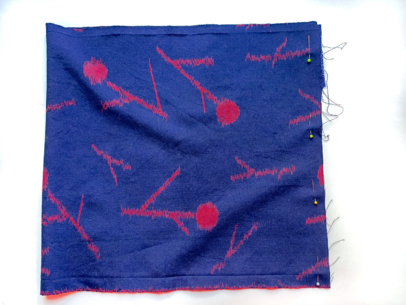
STEP TWO // Make gathering stitches in sleeves.
Make gathering stitches at the tops of the sleeves. To do this, use the longest stitch on the sewing machine and make two parallel lines of stitching about 1.5cm from the edge of each sleeve. Start a few centimetres from the underarm seam and finish a few centimetres on the other side of the underarm seam. When you’re wearing the garment, this will ensure the fabric doesn’t bunch up too much in the armpit.

Note: When making gathering stitches, it’s handy to use a bobbin thread that is a different colour from the needle thread. This helps you to remember which set of threads to pull. If you start by pulling the set of threads on one side of the fabric and accidentally try to pull the other set later, the threads may snap or the fabric may bunch up.
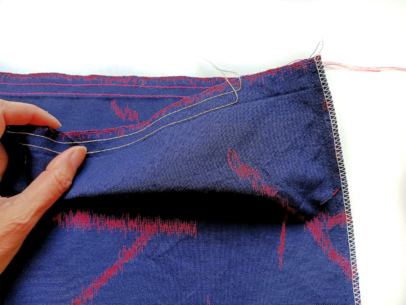
STEP THREE // Gather the sleeves as you pin them to the t-shirt.
With the wrong side of the fabric sleeve facing out, slide the fabric sleeve over the t-shirt sleeve. Roughly match the middle of the fabric sleeve with the middle of the t-shirt sleeve and pin them together.
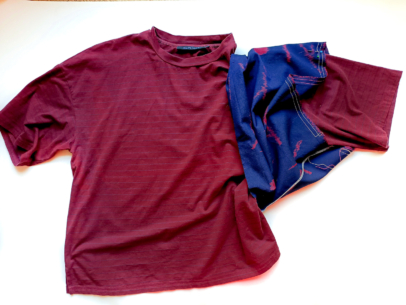
Pin the underarm seam of the fabric sleeve to the underarm seam of the t-shirt sleeve. Note that attaching the sleeve right on the shoulder seam will place many layers of fabric atop each other, which may be difficult to sew through and possibly uncomfortable to wear. Depending on the thickness of the fabrics you are using you may find it easier to offset the new sleeves from the existing seam. In this instance you can attach the sleeves about 1.5m below the t-shirt’s shoulder seam.
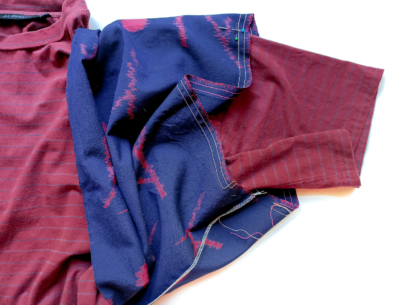
Now that the fabric sleeve is roughly secured to the t-shirt in two places, pull the gathering stitches to fit the fabric sleeve to the t-shirt sleeve. To do this, lightly hold the fabric a few centimetres from the start of the gathering stitches with one hand and use the other hand to gently pull one set of threads (here, the bobbin thread stitches are pink and the needle thread stitches on the other side are cream; it is the needle threads that are being pulled). Move the fabric along the threads (as if pushing a curtain along a rail) and keep pulling up the threads until the fabric is gathered to around the same size as the t-shirt sleeve. You can pull the needle threads from the other end too, to ensure the fabric is distributed evenly. Pin the gathered fabric to the t-shirt sleeve as you go, working your way around. Repeat for the other sleeve.
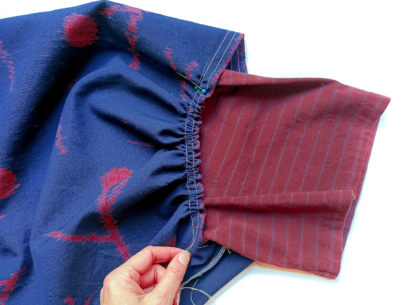
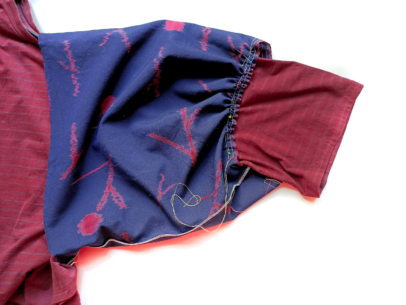
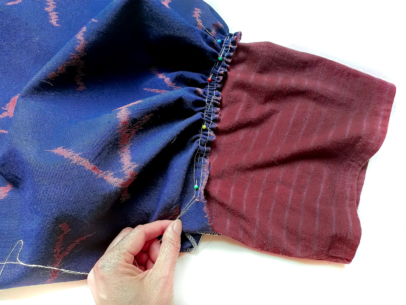
STEP FOUR // Sew the sleeves on.
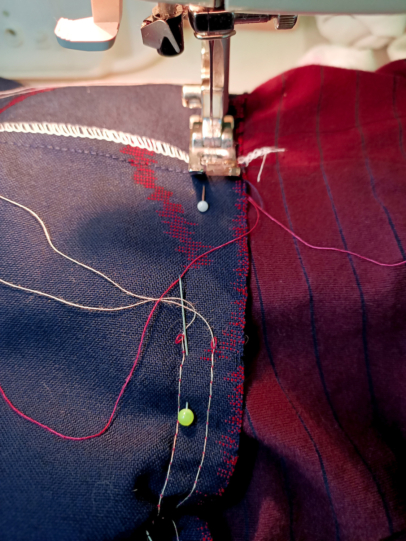
If your t-shirt is tight-fitting and the fabric is quite stretchy, use a zig-zag stitch to sew through the gathered fabric and t-shirt sleeve. Zig-zag stitches have “give” in them, whereas regular straight stitches may break if the fabric is pulled more tightly than when it was sewed (when you put the t-shirt on, for example).
Once the sleeves are stitched to the t-shirt, use the seam ripper to pull out the gathering stitches. (If you’re careful and patient, it’s sometimes possible to pull out the lengths of thread in one go and reuse them for hand stitching. Recycler level: SUPERSTAR!)
STEP FIVE // Finish off the cuffs.
Make a casing and insert elastic. Turn the cuff edge back inside the sleeve by about 3cm and stitch, leaving the underarm seam section open.
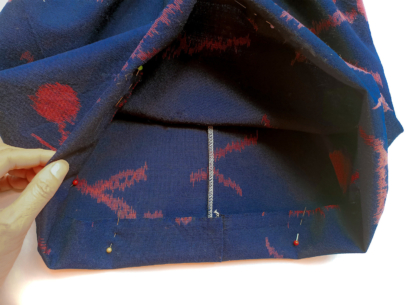
Thread a length of elastic onto a safety pin, push through the casing and sew the ends together, then sew the casing closed.
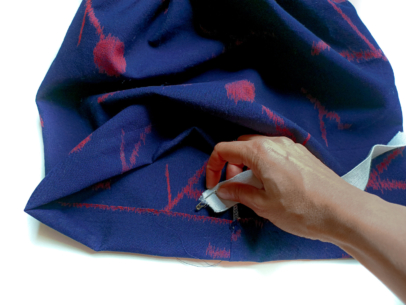
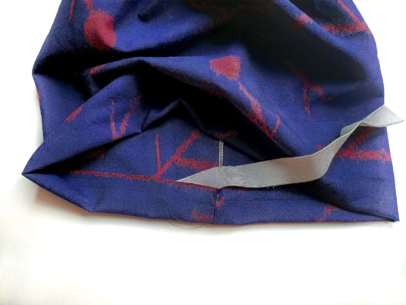
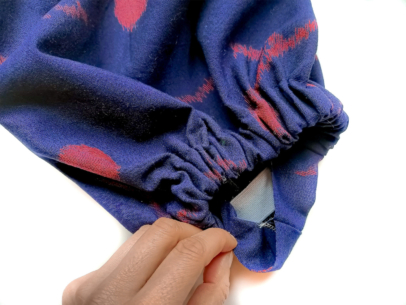
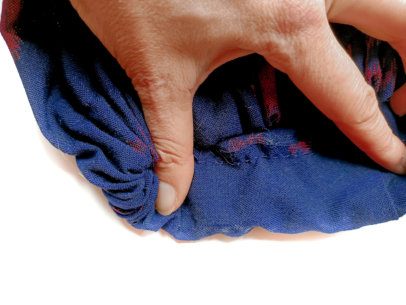
STEP SIX // Admire your work!
Put the t-shirt on and admire your new look!

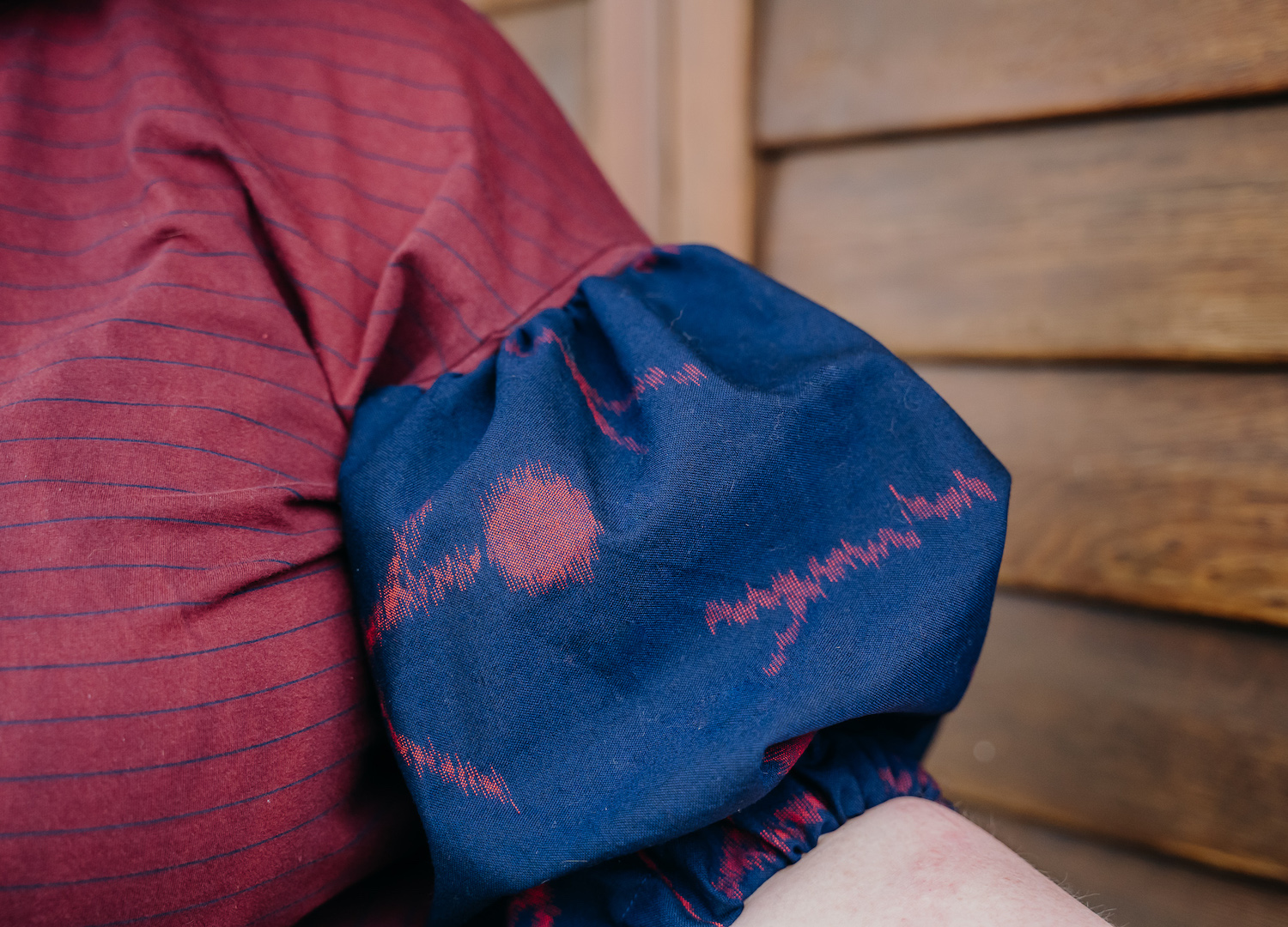

WANT MORE SEWING AND DIY CONTENT? RIGHT THIS WAY!
JOIN OUR MAILING LIST
Brighten up your inbox with our not-too-frequent emails featuring Peppermint-related news, events, competitions and more!
explore
More articles
When you hang a painting on a wall, the story stays put. But when you wear a beautifully made garment that may as well be a piece of art? The story travels. It moves through the world with you –…
We all do it: fire up the car for a 5-minute drive to pick up groceries, drop off sewing supplies, or run a quick errand…
Here’s a question: who decided that natural fibres aren’t a great fit in activewear? For Geraldton mum-of-four Jade Payne, that question became paramount after a…
Fancy a getaway in a heritage building that was once a hospital, an orphanage AND a school in a previous life? Despite what your initial…
When the algorithm gods reward dance trends over hand-thrown ceramics, and building a website feels more stressful than a tax return, where’s a maker to…
Time-travelling lungfish floating in a mosaic of glass tiles, a four-breasted female empowerment goddess cast in bronze, and a striking botanical sculpture spanning 15 metres,…
Hang out with us on Instagram
“Crafting is something that has come naturally since I was small and I just haven’t stopped. When I was smaller, I was interested in the end result. As I’ve gotten older, I realise it’s the process that keeps me coming back to craft. It’s a meditative state for me and I find the repetitive action of the stitching and felting quite therapeutic.”
Craving a world filled with warmth and whimsy? It’s all in a day’s work for textile artist @Cat_Rabbit, whose latest book, ‘Trinkets’, is bursting with felty food friends to make and cherish. Cat invited us into her universe, filled with cheeky characters, layered storytelling and loads of humour.
Plus: try the super sweet pattern for Cat’s Lucky Pickle, perfect to make as a stocking stuffer, extracted from Trinkets.
Read more from our ‘Just felt right’ feature in Issue 64, at newsagents and stockists now!
Photos: Tatanja Ross @On_JacksonStreet and Cat Rabbit
#PeppermintMagazine #CatRabbit #LuckyPickle #Craft #Crafting #Felting #FeltCrafts #Trinkets #ChristmasDecorations

Our hearts go out to everyone impacted by the Bondi Beach violence, especially the Jewish community. Also to the beachgoers, those who bravely helped and the first responders.
While it`s easy – and understandable – to get caught up in the horror of it all and direct anger at certain groups, remember this quote from teacher and author Erin Gruwell: "Don`t let the actions of a few determine the way you feel about an entire group."
“You don`t fight racism with racism. You fight racism with solidarity," said Bobby Seale of the Black Panthers. And solidarity is exactly what we need right now.
If you are feeling overwhelmed, you are not alone. Remember there is much more kindness in the world than hate. ❤️🩹
@LifelineAustralia has created a Bondi Beach Incident: Wellbeing support guide, where you’ll find information about common reactions, reassurance that what you’re feeling is valid, and ideas for taking care of your wellbeing.
https://lifeline.org.au/bondi-incident
You can also call Lifeline on 13 11 14, text on 0477 13 11 14 or chat at lifeline.org.au/crisis-chat anytime, no matter how this has impacted you.
@BeyondBlueOfficial is also available with free 24/7 support by phone on 1300 22 4636 or webchat at https://www.beyondblue.org.au/
Register.Find.Reunite. has been activated by @RedCrossAu to help people reconnect with family and friends. Visit redcross.org.au to access the service.
@NSWPolice Public Information and Inquiry Centre (PIIC) is operating 24/7 on 1800 227 228 for information relating to people impacted.
@LifeBloodAu is supporting Sydney hospitals. O- and O+ blood are always in high demand in emergencies. To donate (from anywhere in Australia – all states are welcome and helpful!) call 13 14 95 or use the Lifeblood app.

Just a reminder… from @SugarHouseCeramicCo
This holiday season be kind, patient and shop local!
#ShopSmall #ShopLocal #SupportSmallBusiness

✨️ Our website is getting a glow-up! ✨️
Sorry for the inconvenience but it will be offline for a few days. You can still purchase subscriptions (perfect for chrissy presents!) via the links on the holding page.
Last year we were extremely excited to receive funding from the Meta Australian News Fund, in partnership with the Walkley Foundation. The result of this is a fabulous new website, with a sustainable fashion and sewing directory that will follow early next year. We`ve worked with the lovely Amy and Jenny at @CrumpetClubHouse who have been making the magic happen – we can`t wait to show you the outcome! ✨️
In the meantime, please get in touch if you need help with anything – hello@peppermintmag.com
We`ll see you on the other side! 🌈

🎀 12 DAYS OF XMAS GIVEAWAYS 🎀
🎄On the 12th day of Christmas, we’re giving away… a GREENPAN FROST ICE CREAM & FROZEN DRINK MAKER! 🎄
Ice, ice, baby! Calling all kitchen magicians and dessert devotees: it’s time to churn, blend and devour your way to frozen heaven. It’s our final giveaway – and hoo girl, it’s a goodie! Thanks to the clever folks at @TheOriginalGreenPan.Anz, one reader will cool their mitts on the Frost Ice Cream & Frozen Drink Maker – perfect for conjuring up home-made gelato, sorbet, smoothies, slushies and more!
Valued at $599, the Frost Ice Cream & Frozen Drink Maker is designed with GreenPan’s signature Thermolon™ ceramic non-stick coating, so you can whip up summer-ready sweet treats free of PFAS, PFOA, lead and cadmium.
To snag this frosty prize, follow @TheOriginalGreenPan.Anz and tag a friend in the comments below before midday AEST 15 December! (Australian and New Zealand addresses only, please.) Good luck!
Update: The lucky winner of our final giveaway is @just__for__van - congrats! We`ll dm to get your details. Well done! 🎉
#PeppermintMagazine #12DaysOfChristmas #12DaysOfGiveaways #GreenPan

Oh hey 👋🏼 Just a little reminder that our subscriptions are sent in paper envelopes, which is a bit of a rarity in our industry. 💅🏼
If you need more reasons to subscribe, how about these:
💌 Enjoy a new issue arriving in your letterbox every six months.
💌 Subscribers exclusively receive FOUR digital sewing patterns per year!
💌 You’ll be the first to get your hands (and needles) on our patterns with early access.
💌 Get a 20% discount code on back issues of Peppermint so you can start your collection today!
💌 Automatically go in the draw to win amazing prizes each issue.
💌 Feel good about your subscription arriving in plastic-free postage.
💌 Support a small, women-led Australian business.
💌 Help us make the world a better place!
And... it`s a perfect Christmas present! We have a downloadable card you can print to go with your gift.
💌 Link in bio!
#PeppermintMagazine #SupportSmallBusiness #ShopLocal #ShopSustainable #PlasticFree











